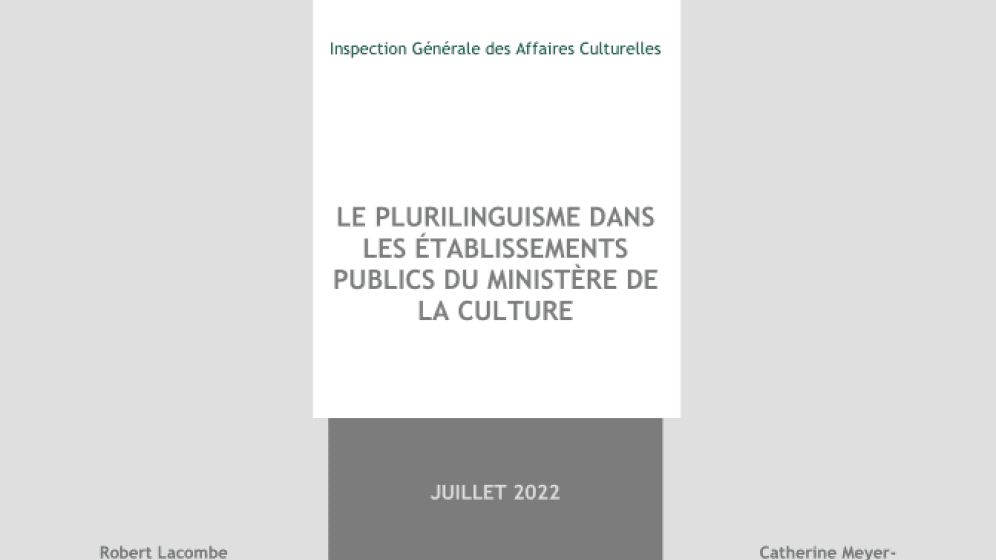The Act No. 94-665 of August 4, 1994 on the Use of the French Language, known as the “Toubon Act”, not only enshrines a “right to French”, but also opens the way to plurilingualism by requiring “double translation”. (in practice in English and another foreign language) that it prescribes to bodies entrusted with a public service mission – at least when the choice is made to translate the physical media. The mission, which heard nearly 120 people, analysed plurilingualism from the point of view of the language policy of the State services and of the cultural institutions under the ministry’s supervision, without mentioning the «good practices» other cultural institutions.
The first part of this report analyses the place of plurilingualism in language policy in France in two respects, international and European on the one hand, national on the other. The growing recognition of the plurality of languages in the territory and the implementation of a public policy of linguistic diversity responds both to a demand for recognition of cultural rights and to a need to improve the attractiveness of the territory for foreign tourists. The policy of plurilingualism, however, comes up against the lack of statistical data on foreign languages (tourists and allophone populations) in use in France and a secondary priority.
The second part of the report is devoted to the review of practices in the field of plurilingualism in museums and heritage sites under the supervision of the Ministry, both in areas where the Toubon law is applicable and in those where it is not. The mission notes that the law is generally complied with (either by the absence of translation or by double translation) in almost all the establishments studied for directional signage, in half of them as regards room signs, but only in a quarter of the cartels. In the case of visiting media (printed and audioguides) the report finds that they are very often translated into more than two foreign languages. Finally, he notes that French-English bilingualism is equal to plurilingualism on websites. French monolingualism is now residual, unlike social networks, where it remains the majority. This assessment is complemented by an analysis of the current limits of plurilingualism and their causes.
The third part of the report analyses the new challenges of plurilingualism faced by cultural institutions, in a context marked by the conjunction of health, geopolitical and climate crises, which leads them to redefine their public policy and language strategy. It highlights the prospects opened up by the rapid development of translation and interpretation technologies based in particular on artificial intelligence. Finally, the mission notes that the future Cité internationale de la langue française (CILF) in Villers-Cotterêts provides an opportunity to rethink a language policy in its national and international dimensions, taking into account the challenges of the 20th century, and giving concrete and operational content to plurilingualism.
Partager la page
